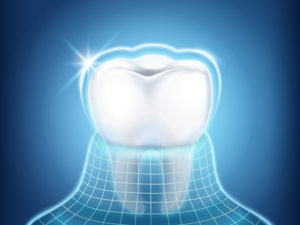Gum Disease: Treatment Options
Are you experiencing swelled, inflamed, or painful gums? If so, you might be suffering from gingivitis which is a condition that can lead to periodontal disease also known as gum disease if it is left untreated. A few other warning signs to watch out for are if your mouth bleeds when you brush or floss or if it feels sensitive. To get a proper diagnosis it would be beneficial if you met with a dentist so that they can conduct a proper examination. Also, if it is determined that you do have gingivitis your dentist will be fully equipped with the tools needed to come up with a treatment plan that best fits your specific case. It’s important to try and catch gum disease in its early stages like gingivitis while it’s curable instead of letting it become periodontitis.
Gingivitis Vs. Periodontal Disease
As mentioned above gingivitis is the beginning stage of gum disease. Also, essentially what gingivitis means is gum inflammation. Meaning that even if your mouth is healthy if you have developed gingivitis essentially bacteria will begin to build up from plaque and this can lead to your gum tissue being destroyed over time. Also, in some cases your mouth doesn’t have to be in pain for example if you are suffering from bad breath or if you have mouth sores this can also be an indication of a problem because it can lead to periodontitis. If your gingivitis does lead to gum disease this could contribute to tissue breakdown. This tissue breakdown can then lead to small pockets where food particles and bacteria can harbor causing full blown periodontitis.
How to Treat It
When you make an appointment with your dentist or your periodontist, they will be able to create or develop a customized treatment plan to help assist you with treating your gum disease. The treatment plan will be personalized based on your specific case. Meaning how much your gum disease has developed and what type of treatment will be needed to treat it properly. Also, it’s important to maintain regular checkups and also to practice self-care techniques at home. Review these non-surgical options below for gum disease treatment:
- Scaling and Root Planing: The Scaling and Root Planing process includes having a deep cleaning done to remove plaque and tartar under the gum line. First the bacteria or negative material is scraped away, and then all of rough spots are smoothed out so that there is no place left for the bacteria to reattach itself.
- Medication: There are different forms of medication that are readily available to assist you with treating gum disease. For example, you may be given an antimicrobial mouth rinse that can help you to control plaque buildup within your mouth. Additionally, it’s possible that antibiotics may also be prescribed.
Schedule A Consultation
While home preventative measures or treatments will help put gum disease at bay the most important and the most effective form of prevention and treatment would be to see a dentist. This is because they will be able to conduct a full examination and also provide you a customized treatment plan based on your case and refer you to a periodontist if needed.




